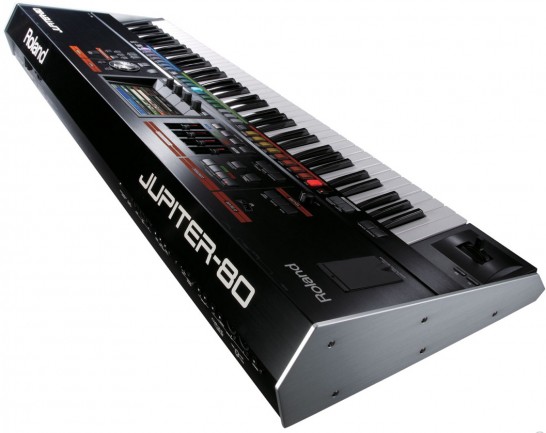
Saturday Synth Porn: The Roland Jupiter 80 synthesizer has been one of the most talked about synths of 2011 – in part because of the controversy over Roland’s revival of the Jupiter name and in part because musicians haven’t had a chance to get their hands on the Jupiter-80 and don’t know what to make of it yet.
It’s still unavailable, but we’ve had a chance to see the Jupiter-80 and hear what it can do – and it’s clear that Roland has put together a synth that people are going to be talking about long after it is released, too.
For now, the Jupiter-80 is worth a second look – for its design, for its heavy duty contruction, for its colors and for its interface – all of which offer an alternative to the minimal, menu-heavy interfaces of all to many synths of the last 25 years.
Here’s a collection of photos of the Jupiter-80 synthesizer – a synth that Roland has designed to be immediately recognizable:


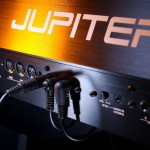

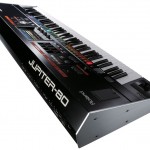
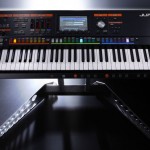





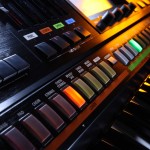

but how does it sound?
I'd like to be hopeful and imagine Roland is doing something awesome…
but I'm less than enthusiastic. After my disappointment with the V-synth's support (and ass-backwards way of importing and archiving user-waves on mac), I fear the worst… another great idea crippled by horrible implementation. Same with the MV-8800… great machine without any support… roland stopped making the expansion boards available to US customers way before they decided to ax it. If you bought one used, they refused to sell replacement VGA cards… Same with their "grooveboxes" (with unstable OSs that were never fixed or supported properly)
I'm thinking this is a rehash of old roland expansion card tech, with an old d-beam, and an old 1990s VA engine tossed in…. don't forget their old effects processing, and their lack of support.
I'm sure plenty of people will love it… but people who have actually used Roland gear over the last few years will probably pass (because they still have their old stuff) or won't bother because they know the deal.
Looks like yet another plastic, rubber buttoned, touch screen, heavy menued POS. Everything revolves around preset patch controls. Nothing can beat the interaction between good old dedicated faders. Gimme hardware filter, LFO and ADSR controls over a touchscreen anyday. And I’m not an analog synth only old timer. I’m 25.
When I think about the "big three" (K, Y, R), it seems like they let the market completely drive their "innovation." The result of this is that there is less innovation– and more packaging & features.
Though I can understand that there will ALWAYS a romance with past technology– the topography of the modular analog, or the analog reel-to-reel transport, etc. Many of us were kind of amused to see 8-bit & 12-bit make the scene as a "gritty" "retro" sound.
Another aspect of this real lack of innovation is the continued insistence on narrow specialty boxes. While I can see that this simplicity has an appeal to some musicians, it seems like a waste of plastic. If they make versatile boxes that do many things well, and where they could operate in certain "modes" to appeal to certain genres (– Kronos seems to do this, in a way)– it would mean that the instrument (and player) could wear more than one hat. A player could get more use out of fewer boards, and resale could be more easy.
There is nothing wrong with integrating familiar processes which are useful and necessary (filters, LFO's, Env's, transport controls, etc., etc…). But it would be nice to see the hardware synth evolve more noticeably.
With ROMplers, we should not be hearing any more laughable acoustic samples– (but listen to the Motif's clarinet samples.) These big manufacturers should check their work and if it sucks, fix it. We should always be able to modulate all sample points: start, end, loop start/end, release. We should be able to map & play all samples forward backward, and any way imaginable.
With synthesis, we should be able to route and map a wide variety of processes, and modulate them with routable, and usefully scalable control.
With the hardware controls, provide ribbons, knobs, sliders, buttons, and jacks/ports. Allow the controllers to evolve and get better. Bring back polyphonic aftertouch, and improve velocity response.
I don't know what to think about this box. It will probably go "yowleeyowlee".
some people got to have it… some people really need it… y'all, do things, do things, do bad things with it.. you wanna do things, do things, do things, good things with it… talk about cash money, money
dollar bills, yall
I'm sure it's a very capable and great sounding synth. But how many of those do you need? I think we all buy one big monster, and then look for smaller, unique instruments from then on. I'd like to see less big monsters with scaled down little brothers, and more unique and focused instruments.
Well, fair enough, Xtopher. Your point is well taken. Maybe one big master workstation and a few specialty rigs for special sounds & controls seems like a good model.
I think the main thrust of my gripe is that apart from some of the quasi- or real analog products, the big workstation seems kind of dumbed down.
If I think about the trajectory of the Triton series, or K2xxx, Motif, or Fantom, no major ground-breakings in recent years.
i agree with most of the complaints. this instrument is 73 keys long! surely that is enough real estate to drop the touchscreen and add dedicated amp and filter controls.
i heard the demos of this synth and it does offer some great sounds but the front panel is useless.
maybe its a cost control issue and i understand that, but theres got to be a compromise somewhere. regardless, its real pretty!